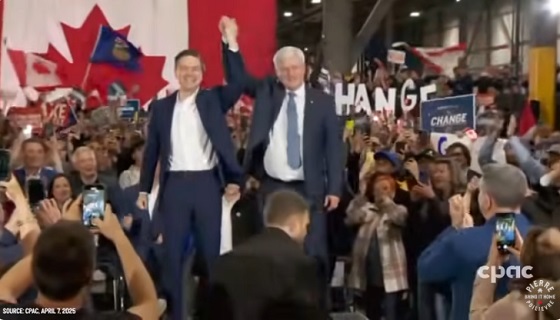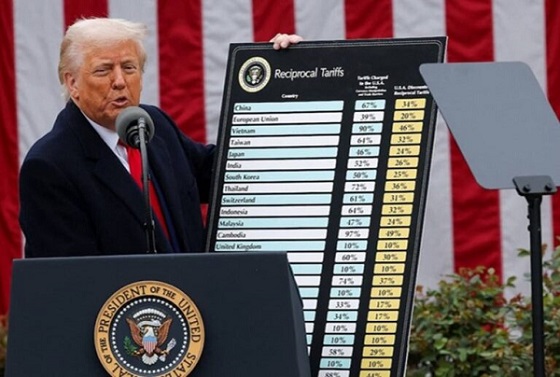Alberta
Vaccine mandate and province-wide restrictions
New vaccine requirements and COVID-19 measures in Alberta
Alberta has declared a state of public health emergency and will implement new health measures to expand capacity, increase vaccination rates and reduce transmission of COVID-19.
New temporary health measures to help slow the spread of COVID-19 will apply provincewide. This includes new restrictions on restaurants, indoor gatherings, weddings and funerals, retail, entertainment venues, and indoor sport and fitness beginning Sept. 20. Measures in workplaces, indoor private gatherings, places of worship, schools and children’s activities, as well as mandatory masking and physical distancing in all indoor public spaces begin Sept. 16.
Starting Sept. 20, businesses or event organizers who choose to implement a program checking patrons for government-issued proof of vaccination or a recent negative privately purchased COVID-19 test will be able to have an exemption to restrictions. If a business or service chooses not to require proof of vaccination, they will be required to adhere to the new health measures.
“We are taking necessary and critical steps to prevent our health system from being overwhelmed and once again slow the spread of COVID-19 in Alberta. These steps are not easy for anyone, but with COVID-19 hospitalizations continuing to rise, particularly amongst the unvaccinated, we have no choice but to implement the proof of vaccination measures and temporary restrictions. We have overcome past COVID-19 waves and we will once again. I strongly urge anyone who has not yet been vaccinated to do so immediately. Please protect yourself, your loved ones and your community.”
“The new proof of vaccination requirements will make us all safer. This will help increase vaccination rates across the province and protect Albertans in settings that pose a higher risk of transmission. We’ve seen from other jurisdictions that proof of vaccinations do help encourage people to get vaccinated, and I am calling on every eligible Albertan to get fully immunized as soon as possible.”
“I know Albertans, especially those who have done everything they can to keep not only themselves but their fellow Albertans safe, are tired. But I’m asking you to please continue to do the right thing to help protect our health-care system and our communities. Please continue to make safe choices, get vaccinated if you haven’t already, wash hands and stay home when ill. Together, we will protect our health system and each other.”
New public health measures provincewide
The following measures will take effect on Sept. 16:
Workplaces:
- Mandatory work-from-home measures are in place unless the employer has determined a physical presence is required for operational effectiveness.
Private social gatherings:
- Indoor private gatherings for vaccine-eligible, fully vaccinated individuals are limited to a single household plus one other household to a maximum of 10 people, with no restrictions on children under the age of 12.
- Attendance at any indoor private social gathering is not permitted for vaccine-eligible individuals who are unvaccinated.
- Outdoor private social gatherings are permitted to a maximum of 200 people, with two-metre physical distancing maintained at all times.
Places of worship:
- Places of worship must limit attendance to one-third fire code capacity.
- Face masks will be mandatory and there must be two-metre physical distancing between households or two close contacts for those living alone.
Outdoor events and facilities with no indoor portion (excluding washrooms):
- No attendance restrictions, however two-metre physical distancing must be in place.
Schools (K-12):
- Mandatory masking for students in grades 4 and up, plus staff and teachers in all grades. Schools that can implement an alternate COVID safety plan can be exempted from mandatory masking.
- Elementary schools are to implement class cohorting.
- For physical activities in schools:
- Youth aged 18 and under are not required to mask or maintain two-metre distance when engaged in physical activity.
- There are no restrictions on outdoor activities.
- Indoor sports/performance/recreation/
special interests are permitted with requirements for two-metre physical distancing, where possible.
Children’s sport/performance/recreation (extracurricular sports, performance, recreation and special interest):
- Indoor activities are permitted, with requirements for two-metre physical distancing and masking where possible, and symptom screening for participants.
- Youth aged 18 and under are not required to mask or maintain physical distancing during a physical activity, such as a team sport.
- Spectator attendance is limited to one-third fire code capacity. Attendees must be masked and ensure physical distancing between different households or an individual who lives alone and their two close contacts.
- There are no restrictions on outdoor activities.
Children’s activities:
- Children’s day camps must have two-metre physical distancing between participants and masking indoors.
- Children’s overnight camps must follow cohort models.
The following measures will take effect on Sept. 20:
Restaurants:
- Outdoor dining only with a maximum of six individuals per table (one household or two close contacts for those living alone).
- Liquor sales and consumption restrictions (10 p.m. sales and 11 p.m. consumption) apply.
- Restaurants are eligible to implement the Restrictions Exemption Program.
Weddings and funerals:
- All indoor ceremonies and services are limited to 50 attendees or 50 per cent fire code capacity, whichever is less.
- No indoor receptions are permitted.
- The hosting facility would be eligible to implement the Restrictions Exemption Program.
- All outdoor ceremonies and services for weddings and funerals must be limited to 200 attendees. Outdoor receptions are required to follow liquor sales and consumption restrictions (i.e., sales end at 10 p.m. and consumption ends by 11 p.m.).
- The hosting facility would be eligible to implement the Restrictions Exemption Program.
Retail, entertainment and recreation facilities (includes any indoor venues, libraries, conferences, rental spaces, concerts, nightclubs, casinos and similar):
- Attendance is limited to one-third fire code capacity and attendees are only permitted to attend with their household or two close contacts for those living alone. Attendees must be masked and have two-metre physical distancing between households.
- These facilities are eligible to implement the Restrictions Exemption Program.
Adult (over 18 years old) sport, fitness, performance, and recreation:
- Indoor activities:
- No indoor group classes or activities are permitted.
- One-on-one training or individual workouts are permitted but three-metre physical distancing is required.
- No contact between players; indoor competitions are paused except where vaccine exemptions have been granted.
- These facilities and programs are eligible to implement the Restrictions Exemption Program. Specific exemptions may also be granted on a case-by-case basis.
- There are no restrictions on outdoor activities.
Restrictions Exemption Program
- Starting Sept. 20, vaccine-eligible individuals will be required to provide government-issued proof of immunization or a negative privately paid COVID-19 test from within the previous 72 hours to access a variety of participating social, recreational and discretionary events and businesses throughout the province.
- To enter certain spaces that are participating in the program, including restaurants, bars and indoor organized events, people aged 12 and older will be required to show their proof of vaccination or a negative recent test result.
- Businesses that implement the Restrictions Exemption Program would operate as usual, provided they are serving only people who have proof of immunization or who have a recent privately paid negative test, as per the requirements in place. This means they could immediately and without restriction serve any individual eligible for vaccination who:
- Has proof of double vaccination (note that for a transitional period between Sept. 20 and Oct. 25, proof of a single dose would be considered acceptable as long as the dose was given two weeks or more before the time of service).
- Has documentation of a medical exemption.
- Has proof of a recent (within the previous 72 hours) negative COVID-19 test (either PCR or Rapid Test). The test may not be from Alberta Health Services or Alberta Precision Laboratories.
- Those under age 12 would not need to provide proof of immunization or a negative test to enter a participating business.
- This program would not apply to businesses or entities that need to be accessed for daily living.
- Albertans can access copies of their COVID-19 vaccination records through MyHealth Records. For the time being, Albertans should avoid logging into MyHealth Records to download their records. The printable card, which was going to be made available on Sept. 16, will now be available on Sept. 19.
Get fully vaccinated
More than 79.5 per cent of eligible Albertans are now protected with at least one dose of COVID-19 vaccine and 71.4 per cent are fully vaccinated. Vaccines dramatically reduce the risk of severe outcomes and the risk of infection.
Vaccines are the most powerful tool in the fight against COVID-19. Vaccine appointments are widely available through AHS or participating pharmacies and physician clinics. Book yours at alberta.ca/vaccine. First doses are also available at select walk-in clinic locations. Two doses provide maximum effectiveness and long-lasting protection.
Alberta
Alberta takes big step towards shorter wait times and higher quality health care
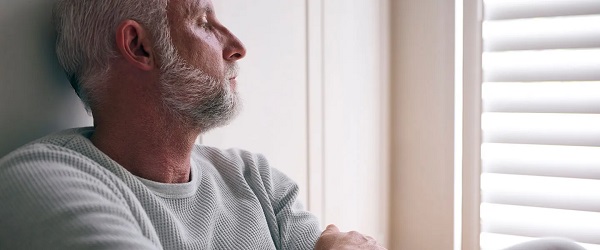
From the Fraser Institute
On Monday, the Smith government announced that beginning next year it will change the way it funds surgeries in Alberta. This is a big step towards unlocking the ability of Alberta’s health-care system to provide more, better and faster services for the same or possibly fewer dollars.
To understand the significance of this change, you must understand the consequences of the current (and outdated) approach.
Currently, the Alberta government pays a lump sum of money to hospitals each year. Consequently, hospitals perceive patients as a drain on their budgets. From the hospital’s perspective, there’s little financial incentive to serve more patients, operate more efficiently and provide superior quality services.
Consider what would happen if your local grocery store received a giant bag of money each year to feed people. The number of items would quickly decline to whatever was most convenient for the store to provide. (Have a favourite cereal? Too bad.) Store hours would become less convenient for customers, alongside a general decline in overall service. This type of grocery store, like an Alberta hospital, is actually financially better off (that is, it saves money) if you go elsewhere.
The Smith government plans to flip this entire system on its head, to the benefit of patients and taxpayers. Instead of handing out bags of money each year to providers, the new system—known as “activity-based funding”—will pay health-care providers for each patient they treat, based on the patient’s particular condition and important factors that may add complexity or cost to their care.
This turns patients from a drain on budgets into a source of additional revenue. The result, as has been demonstrated in other universal health-care systems worldwide, is more services delivered using existing health-care infrastructure, lower wait times, improved quality of care, improved access to medical technologies, and less waste.
In other words, Albertans will receive far better value from their health-care system, which is currently among the most expensive in the world. And relief can’t come soon enough—for example, last year in Alberta the median wait time for orthopedic surgeries including hip and knee replacements was 66.8 weeks.
The naysayers argue this approach will undermine the province’s universal system and hurt patients. But by allowing a spectrum of providers to compete for the delivery of quality care, Alberta will follow the lead of other more successful universal health-care systems in countries such as Australia, Germany, the Netherlands and Switzerland and create greater accountability for hospitals and other health-care providers. Taxpayers will get a much better picture of what they’re paying for and how much they pay.
Again, Alberta is not exploring an untested policy. Almost every other developed country with universal health care uses some form of “activity-based funding” for hospital and surgical care. And remember, we already spend more on health care than our counterparts in nearly all of these countries yet endure longer wait times and poorer access to services generally, in part because of how we pay for surgical care.
While the devil is always in the details, and while it’s still possible for the Alberta government to get this wrong, Monday’s announcement is a big step in the right direction. A funding model that puts patients first will get Albertans more of the high-quality health care they already pay for in a timelier fashion. And provide to other provinces an example of bold health-care reform.
Alberta
Alberta’s embrace of activity-based funding is great news for patients

 From the Montreal Economic Institute
From the Montreal Economic Institute
Alberta’s move to fund acute care services through activity-based funding follows best practices internationally, points out an MEI researcher following an announcement made by Premier Danielle Smith earlier today.
“For too long, the way hospitals were funded in Alberta incentivized treating fewer patients, contributing to our long wait times,” explains Krystle Wittevrongel, director of research at the MEI. “International experience has shown that, with the proper funding models in place, health systems become more efficient to the benefit of patients.”
Currently, Alberta’s hospitals are financed under a system called “global budgeting.” This involves allocating a pre-set amount of funding to pay for a specific number of services based on previous years’ budgets.
Under the government’s newly proposed funding system, hospitals receive a fixed payment for each treatment delivered.
An Economic Note published by the MEI last year showed that Quebec’s gradual adoption of activity-based funding led to higher productivity and lower costs in the province’s health system.
Notably, the province observed that the per-procedure cost of MRIs fell by four per cent as the number of procedures performed increased by 22 per cent.
In the radiology and oncology sector, it observed productivity increases of 26 per cent while procedure costs decreased by seven per cent.
“Being able to perform more surgeries, at lower costs, and within shorter timelines is exactly what Alberta’s patients need, and Premier Smith understands that,” continued Mrs. Wittevrongel. “Today’s announcement is a good first step, and we look forward to seeing a successful roll-out once appropriate funding levels per procedure are set.”
The governments expects to roll-out this new funding model for select procedures starting in 2026.
* * *
The MEI is an independent public policy think tank with offices in Montreal, Ottawa, and Calgary. Through its publications, media appearances, and advisory services to policymakers, the MEI stimulates public policy debate and reforms based on sound economics and entrepreneurship.
-
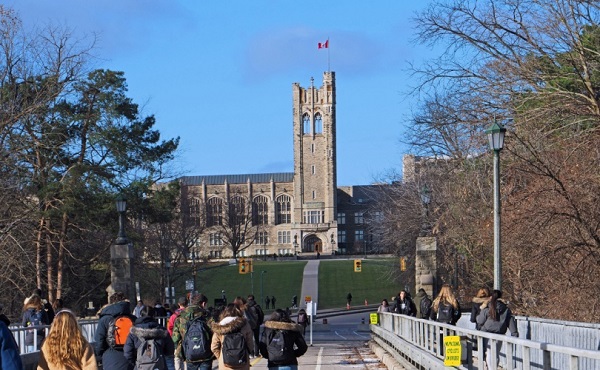
 2025 Federal Election1 day ago
2025 Federal Election1 day agoRCMP memo warns of Chinese interference on Canadian university campuses to affect election
-

 2025 Federal Election2 days ago
2025 Federal Election2 days agoConservative Party urges investigation into Carney plan to spend $1 billion on heat pumps
-

 Alberta2 days ago
Alberta2 days agoAlberta takes big step towards shorter wait times and higher quality health care
-

 2025 Federal Election2 days ago
2025 Federal Election2 days agoFifty Shades of Mark Carney
-

 2025 Federal Election16 hours ago
2025 Federal Election16 hours agoResearchers Link China’s Intelligence and Elite Influence Arms to B.C. Government, Liberal Party, and Trudeau-Appointed Senator
-
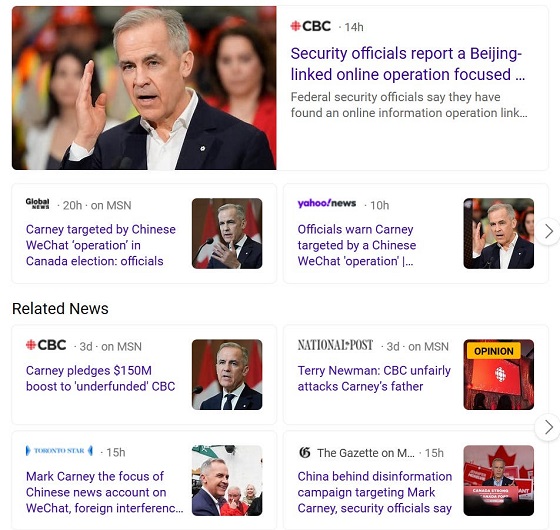
 2025 Federal Election2 days ago
2025 Federal Election2 days agoCorporate Media Isn’t Reporting on Foreign Interference—It’s Covering for It
-

 Business2 days ago
Business2 days agoTrump raises China tariffs to 125%, announces 90-day pause for countries who’ve reached out to negotiate
-
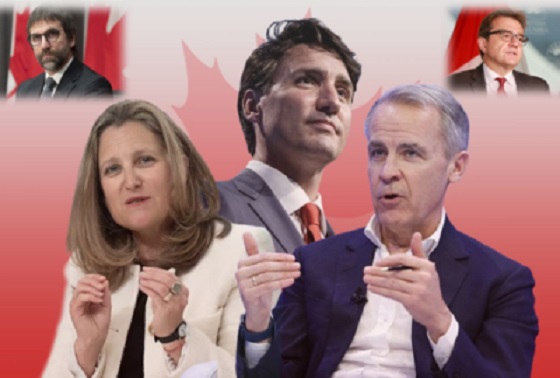
 2025 Federal Election1 day ago
2025 Federal Election1 day agoThe status quo in Canadian politics isn’t sustainable for national unity





